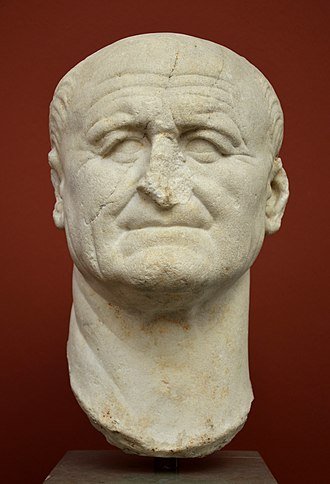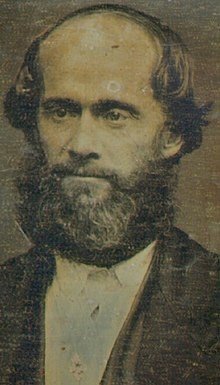What if you suddenly learned that your family history is a pack of lies told to cover up shocking crimes? At the age of 38, Jennifer Teege suddenly learned that her grandfather was Amon Goeth, SS commandant of the Plaszow labor camp near Krackow, Poland. Goeth was tried as a Nazi war criminal and hanged in 1946.
Her beloved grandmother, Ruth Irene lived with Goeth in the house where he stood on the balcony and shot at Jewish prisoners with a high-powered rifle. (In the movie Schindler’s List, Ruth Irene buries her head under the pillows while he shoots.) Ruth Irene told Jennifer that Goeth was a cultured, educated man, kind and gentle, who never killed anyone.
Jennifer Teege was a German girl of mixed race born at a time when that was uncommon. Her biological father disappeared after conception and her single mother placed Jennifer in an orphanage. While Jennifer loved the family that adopted her, she couldn’t stop wondering what flaw in her had caused her mother to abandon her.
As an adult, Jennifer learned that her mother, Monika, spent her entire life coping with the emotional fallout of knowing who her father was and what he had done. Everyone who met Monika said she looked exactly like her father.
Monika’s struggles mirror the mental and emotional distress experienced by other children of Nazi war criminals. The children remembered their fathers and their mothers as loving parents who cared for them, arranged birthday parties, and came to their school activities. But history books and Holocaust documentaries revealed that their fathers were sadistic monsters who believed in white supremacy and committed murder on an industrial scale. Many of the children succumbed to alcoholism and suicide. Some worried that their genes were “bad” and underwent voluntary sterilization.
Jennifer also struggled with depression after learning the truth about her grandparents. When she revealed her biological family’s history to her adopted family, it almost destroyed them too. Her adopted father became obsessed with discovering exactly how many people died in the Holocaust. (We’ll never know because records were destroyed, lost or never created. On the Russian Eastern Front, for example, researchers compare eyewitness accounts of massacres to military reports about the amount of ammunition expended on that date and then estimate the number of likely victims.)
When Jennifer’s adopted father was dying, he finally revealed that his obsession was based on his fear of what his parents might have done. Was it possible that his father had committed crimes against humanity while serving in the Army in World War II? What if his father knew of crimes committed by others but said nothing? Does silence or guilty knowledge create criminal culpability? What should the next generation do with that knowledge?
In the aftermath of the war, silence was golden to everyone. Germany was destroyed and everyone was more interested in finding food and shelter than in rehashing the past. In France, Charles de Gaulle ordered everyone to draw a veil over the past because he feared that France would tear itself to pieces over the issue of collaboration during the Nazi occupation.
In Palestine (later Israel), Holocaust survivors were often silent because what they had been through was so horrific, they didn’t know how to talk about it. They also kept silent due to social pressures. Some Jews who settled in Palestine before the war apparently believed that Holocaust survivors must be criminals themselves, staying alive by stealing food from their fellow inmates.
Today, it’s common to criticize the generation of Europeans who “stood by” while the Holocaust happened. We tell ourselves that we would never stand by while such terrible crimes were being committed.
Unfortunately, horrific crimes don’t happen in a vacuum. They happen because of our assumptions and attitudes which are internalized to the point of invisibility.
The Holocaust happened because social attitudes made it easy to hate Jews. Jennifer’s adopted father was told by his mother that Jews were hated because they owned all the shops in Germany. Germans suffered hyperinflation during the Great Depression which made it easy to blame greedy Jewish storeowners, even for people who weren’t openly anti-Semitic.
The U.S. also has a lengthy history of hate-filled social attitudes which allowed terrible crimes to be perpetrated. The country continues to engender people who believe in the racial superiority of European Americans. From slavery to Jim Crow to “the only good Indian is a dead one”, the attitudes we learn at home are so much a part of us, we don’t recognize them for what they are. Much like Jennifer’s adopted father, a good man who didn’t recognize the anti-Semitism he was taught.
Standing up to injustices means losing our social standing, our friends, and sometimes our lives. In Nazi Germany, Dietrich Bonhoeffer stood up to the Nazis and was thrown into a concentration camp, then murdered. Ida B. Wells publicized the horrors of lynching and was chased out of Memphis. Her enemies smeared her reputation so viciously that 90 years after her death, she is finally being honored for standing up. More recently, Alexis Navalny stood up for the rule of law in Putin’s Russia and was murdered by Putin’s puppets.
Bonhoeffer, Wells, and Navalny are reminders of the risks of standing up to those who commit unspeakable, horrific crimes. Whether in Nazi Germany, or today’s Russia and the U.S., crimes are perpetrated because most people tacitly agree with the perpetrators or because they are afraid of becoming targets themselves.
Jennifer, her biological mother, and her adopted father never had to decide whether to stand up to the Nazis but were guilt-ridden because of the decisions of the prior generation. The generation that follows us will face the same dilemma when they discover our decisions on standing by or standing up to those who commit horrific crimes.
To learn more about how Jennifer Teege and her family coped with the truth about her grandfather, see her book, My Grandfather Would Have Shot Me (2013). You may also be interested in The Nasty Girl, a 1990 German film loosely based on the true story of a girl who had grown up hearing that her town resisted the Nazis. When she begins uncovering what really happened during the war, the town turns on her and her family.

















































































